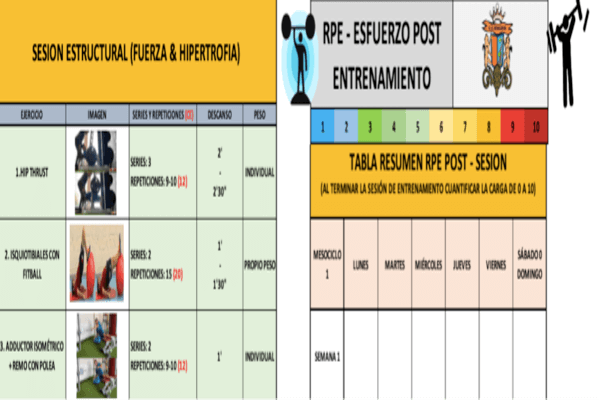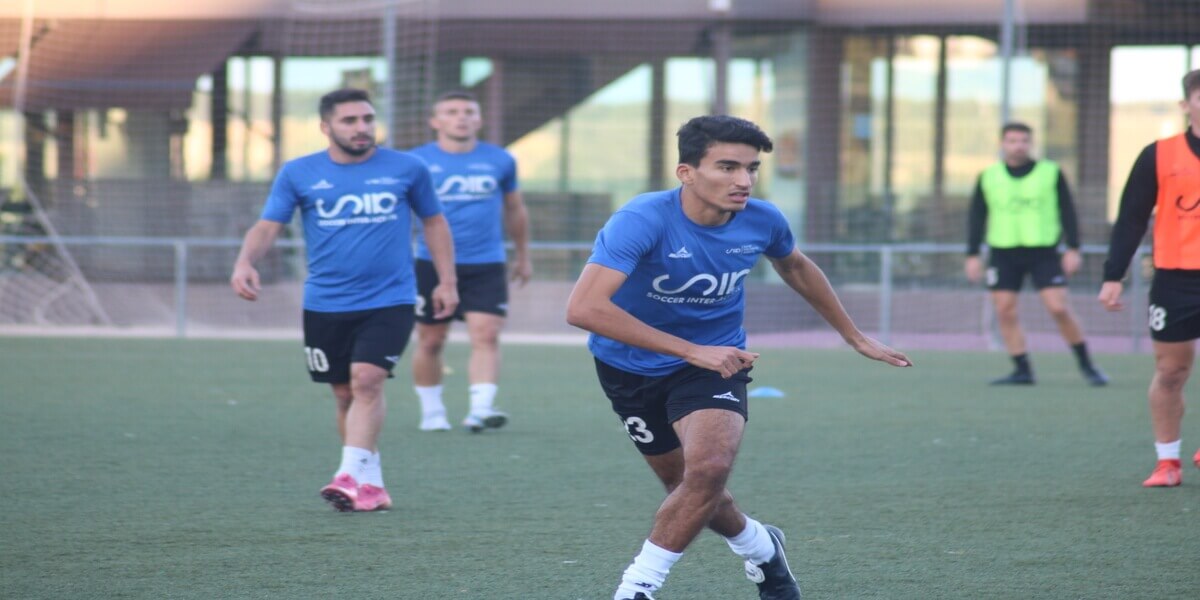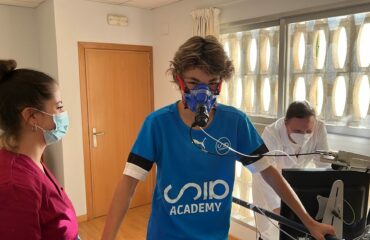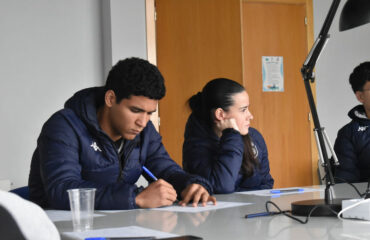Physical preparation in a football context
Football, as a sport, has its own characteristics that define and condition its functioning and Hernández Moreno (1994) understands it as “those sports of collaboration – opposition, in which the action of the game is the result of the interactions between the participants, produced in such a way that a team cooperates with each other to oppose another team that also acts in cooperation and that in turn opposes the previous one”.
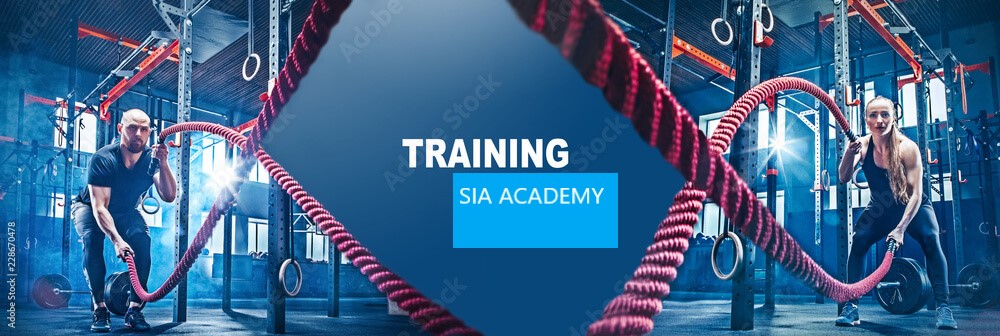
However, it is important to define the logic of football which, according to Castelo (1999) and Hernández Moreno (1994) is composed by the interrelation of the rules, the technique, the time, the space, the motor communication, the motor strategy, the mobile and always considering the football player as the fundamental element in football matches.
In this way, the player can be understood as a complex system created by other systems that interact with each other in order to achieve the determined objectives. Seirul-lo (1987), establishes different structures in which a football player is made up: conditional structure, cognitive structure, co-ordination structure, socio-affective structure, emotional-volitional structure and creative-expressive structure.
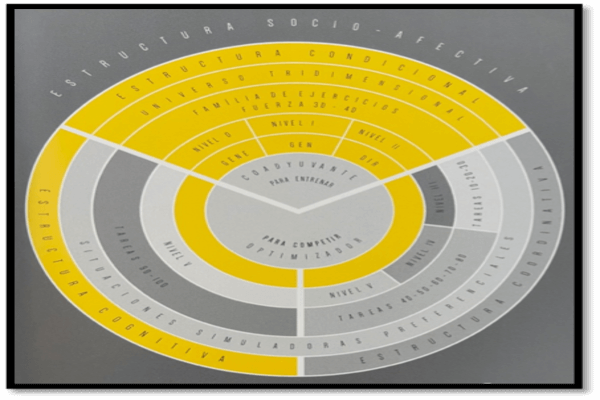
Figure 1. Layer diagram with the main structures that make up structured training (Seirul-lo, 2017).
Researchers who have studied risk factors for injury
In the medical field, researchers have focused on studying muscle epidemiology and assessing potential risk factors in order to reduce potential injuries throughout the season (Hagglund, M., Zwervwe, J., Ekstrand, J., 2011; Best, R., Mauch, F., Bohle, C., Huth, J., Bruggemann, P., 2014), in investigating the incidence and nature of muscle injuries which has increased dramatically in recent years (Ekstrand, J., Hagglund, M., Waldén, M., 2011; De Castro, J., Machado, K., Scaramussa, K. et al., 2013), in rehabilitation through sport-physical programmes (Thorborg, K., Serner, A., Petersen, J., Madsen, T. M., et al., 2011; Thorborg, K., Couppé, C., Petersen, J., Magnusson, SP., Hölmich, P., 2011), in identifying the incidence rate of injuries with the aim of injury prevention (Schmikli, S.L., de Vries, W.R., Inklaar, H., Backx, F.J.G., 2011) and finally in evaluating the influence of post-match recovery therapies (Ascensao, A., Leite, M., Rebelo, A.N., Magalhaes, S., Magalhaes, J., 2011).

Prevención de lesiones en el fútbol
Injury prevention is a cliché in the scientific literature and a constant concern of technical bodies, as it represents a loss of work, sport and therefore economic and sporting performance. From here, certain types of injuries are of special interest, either because of their severity, such as knee injuries, or because of their frequency of occurrence, such as ankle or hamstring injuries.
Therefore, maximising the health benefits of physical-sports practice and minimising the cost associated with injuries makes it necessary to develop methods to prevent sports injuries. Based on a conceptual and scientific framework, which justifies injury incidence and epidemiology, the first step is to establish the magnitude of the problem (number, incidence, severity or consequences).
The second step is to identify the injury mechanisms and risk factors for injuries in each sport. The third step relies on the implementation of preventive measures that will emerge from the analysis of the previous steps, which in turn will try to reduce the risk or severity of injuries. Finally, the fourth step consists of the evaluation of the effectiveness of the proposed preventive measures.
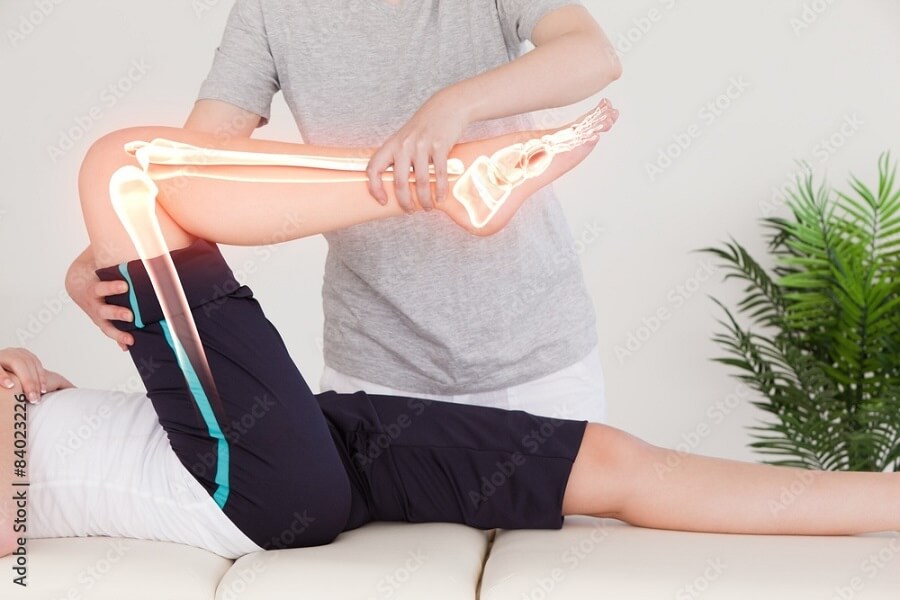
From this point on, the injury is not the product of an isolated mechanism, but is presented as a complex network of interrelationships that must be analysed. Therefore, the study of when, where and how injuries occur is essential. Studying these aspects will help us to design preventive protocols close to the competition – training and will provide us with valuable information for the design of rehabilitation protocols. Aceña, A. (2014).
We propose that intrinsic factors such as age, sex, height or race predispose the athlete to suffer injuries and that these then interact with extrinsic factors such as body weight or fat percentage, previous injury, fatigue, muscle strength, motor control, asymmetries, inadequate return to play, warm-up, etc. that enhance the possibility of injury.
In conclusion, we can say that there are many strategies that can positively influence the prevention of some injuries, PREVENTION must be seen from a global and multidisciplinary perspective and as professionals in the world of physical preparation, we will focus on the individual training of the football player.

Figure 2. Infographic on the risk factors associated with the mechanism of injury of the hamstring muscles.
DESIGN OF PREVENTIVE PROGRAMMES
Injury history
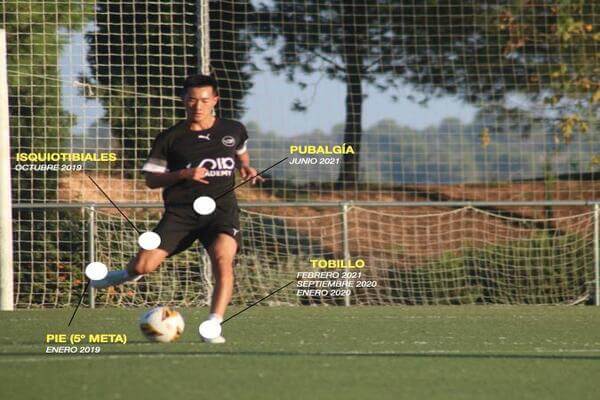
Objective assessment
- – Anthropometric assessment. Anthropometry is the measurement of the dimensions and physical characteristics of the human body. With this test we analyse body composition (% fat, muscle, etc.), as well as the different body perimeters.
- – Thomas test. The test consists of lifting one leg to rule out a shortening of the psoas.
- – Ankle test. To evaluate ankle dorsiflexion. There is now strong scientific evidence linking limitation of ankle joint movement to an increased likelihood of injury.

- – FMS. It is a test composed of seven fundamental/basic movement patterns. It aims to provide observable performance of selected basic, manipulative and stabilisation movements. This allows for the assessment of stability, mobility and muscle strength.
- – Y-balance test. The YBT is a test that assesses dynamic balance and is used to predict the risk of lower limb injury.
- – Vertical and horizontal strength assessment. Horizontal strength through the hop test and vertical strength through the CMJ test as shown in the following image taken during the pre-season at UD SIA Beniganim.
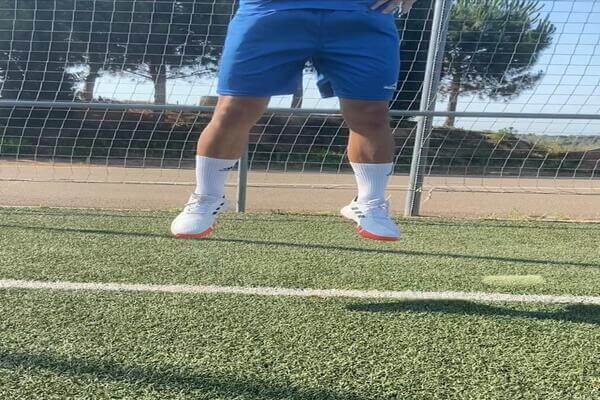
- – T-Test. It is a test where there are four changes of direction, an application of force both horizontally and laterally. It is used to evaluate the speed and mechanics of the change of direction.
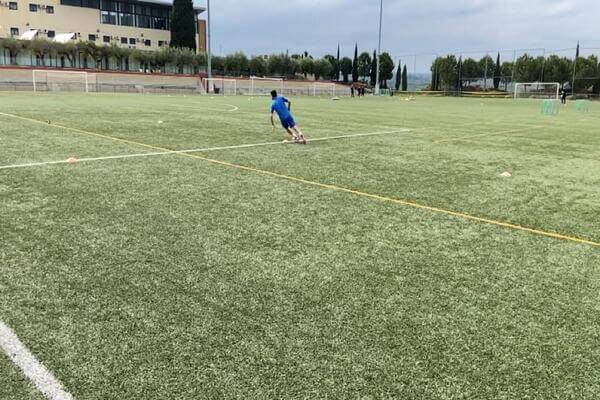
- – Speed 30 metres. The aim of this test is to measure the speed of reaction and the speed of displacement (specifically, acceleration).

- – Test 30-15. This test consists of running back and forth for 30 seconds separated by passive recovery periods of 15 seconds. The first run starts at a slow pace and increases progressively by 0.5 km.h-1 in each of the out-and-back stages until the player is exhausted or meets the completion criteria.
Context
It is a project of football education professionals, combining football, education and technology. Aimed at players, coaches and teams where the objective is to create the ideal conditions in the SIA Center that allow the maximum development of football potential at both individual and team level.
Giving everyone a chance to have a professional future in football. At the international football academy, in training, at clinics, campuses, competing in tournaments, at tryouts, etc.
Football is a sport of an intermittent nature where high intensity efforts such as jumping, sprinting, changes of direction, striking and contact alternate with periods of incomplete recovery.
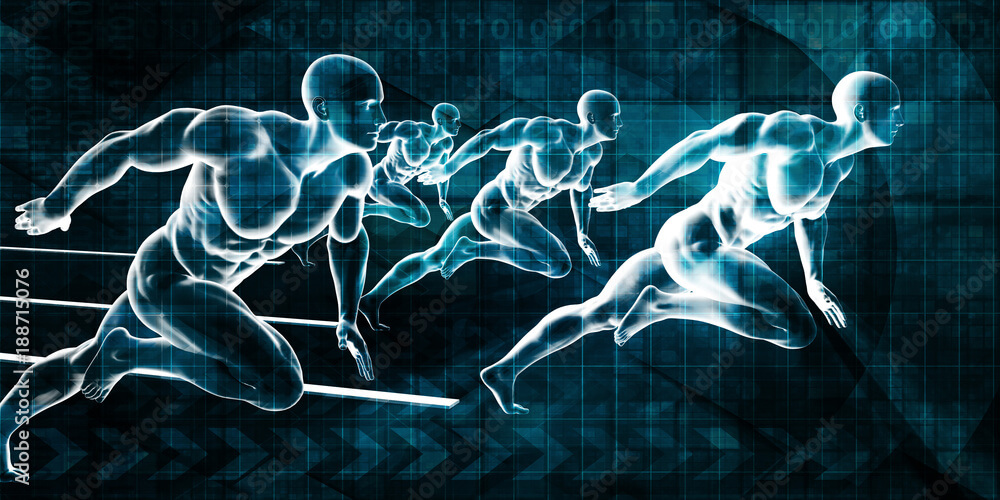
Therefore, footballers will need high levels of fitness, developing a specific combination of strength, speed and endurance, in order to perform at a high level throughout the match. Of all of these, there is one that we give special importance to at the academy and which we consider to be the basis of physical preparation: strength.
But, in addition, if we focus on performance itself, the quality of the training and training process takes on total relevance, being the quality of this that can ensure, to a large extent, the achievement of competitive results (Garganta, 2008).
By quality of training, we mean not only making the necessary means available to the player to improve his football and sporting skills, but also contributing to his integral development, including both sporting and educational and personal training.
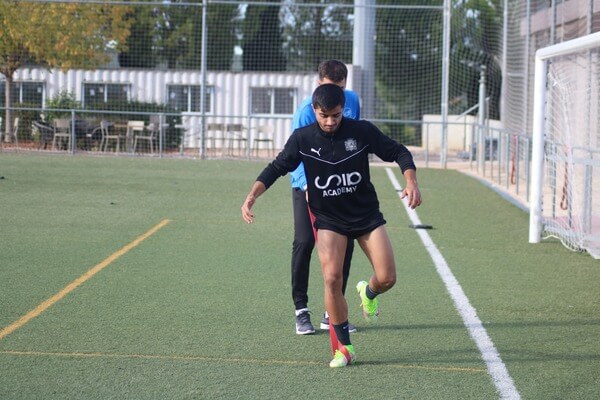
Proposal for action
Strength is fundamental for injury prevention and performance enhancement. We only have to analyse and see that most goals in football are preceded by an explosive action of short duration, which translates into actions where the application of strength in a short time is very important (jumps, acceleration and braking, sprints, changes of direction…) and in the end these actions are what determine performance.
Also having better strength levels will improve endurance in general and the ability to repeat high intensity sprints (RSA) that are so common in a football match.
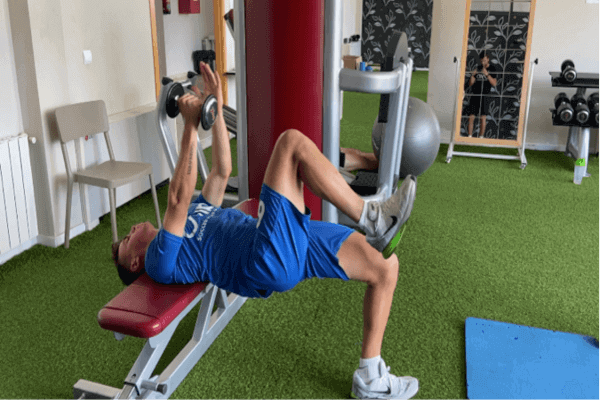
On the other hand, strength training is also very important in injury prevention. In football, injuries have a series of repercussions (economic, sporting and psychological) that affect both the athletes and the sporting entity to which they belong.
Muscle imbalances, lack of eccentric strength of the musculature to withstand increases in tension, fatigue or an incorrect motor pattern, are the main risk factors for injury in football, and all this can be greatly improved with proper strength training.
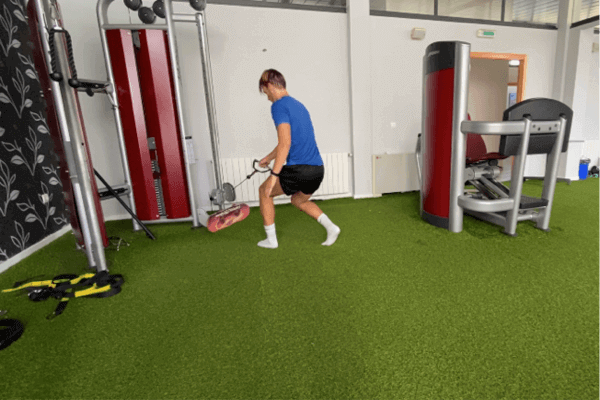
Taking into account the results of the tests, the individual needs of the players, their age, the position they play and their maturational development (biological age), we send them the training they have to do in the gym, always reviewed by our physical trainers, to ensure that they carry out the whole training programme correctly.
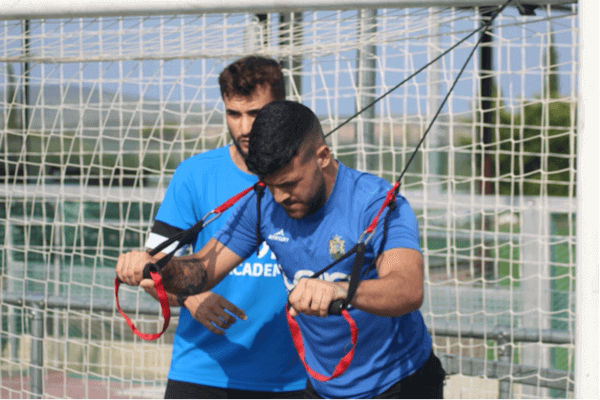
As for the physical preparation exercises, we start with progressions of simple push ups, pull ups, hip dominants, knee dominants and core stability exercises.
And as we change training cycles and we see that they meet the established criteria, we change the exercises to try to get to more specific unilateral work.
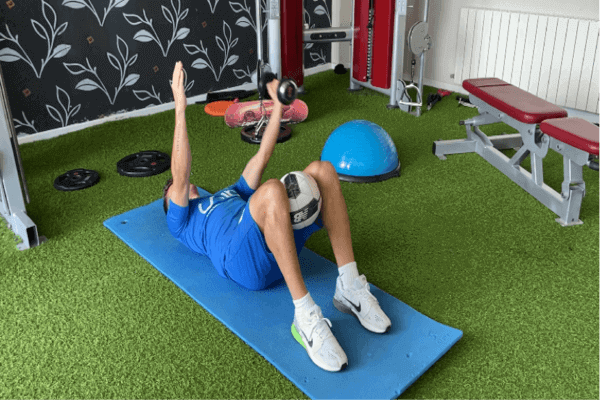
All of this is in accordance with the training loads that they do on the field, as, depending on the weeks, they may vary and it is important to ensure that the players do not become too fatigued due to the risk that this entails.
